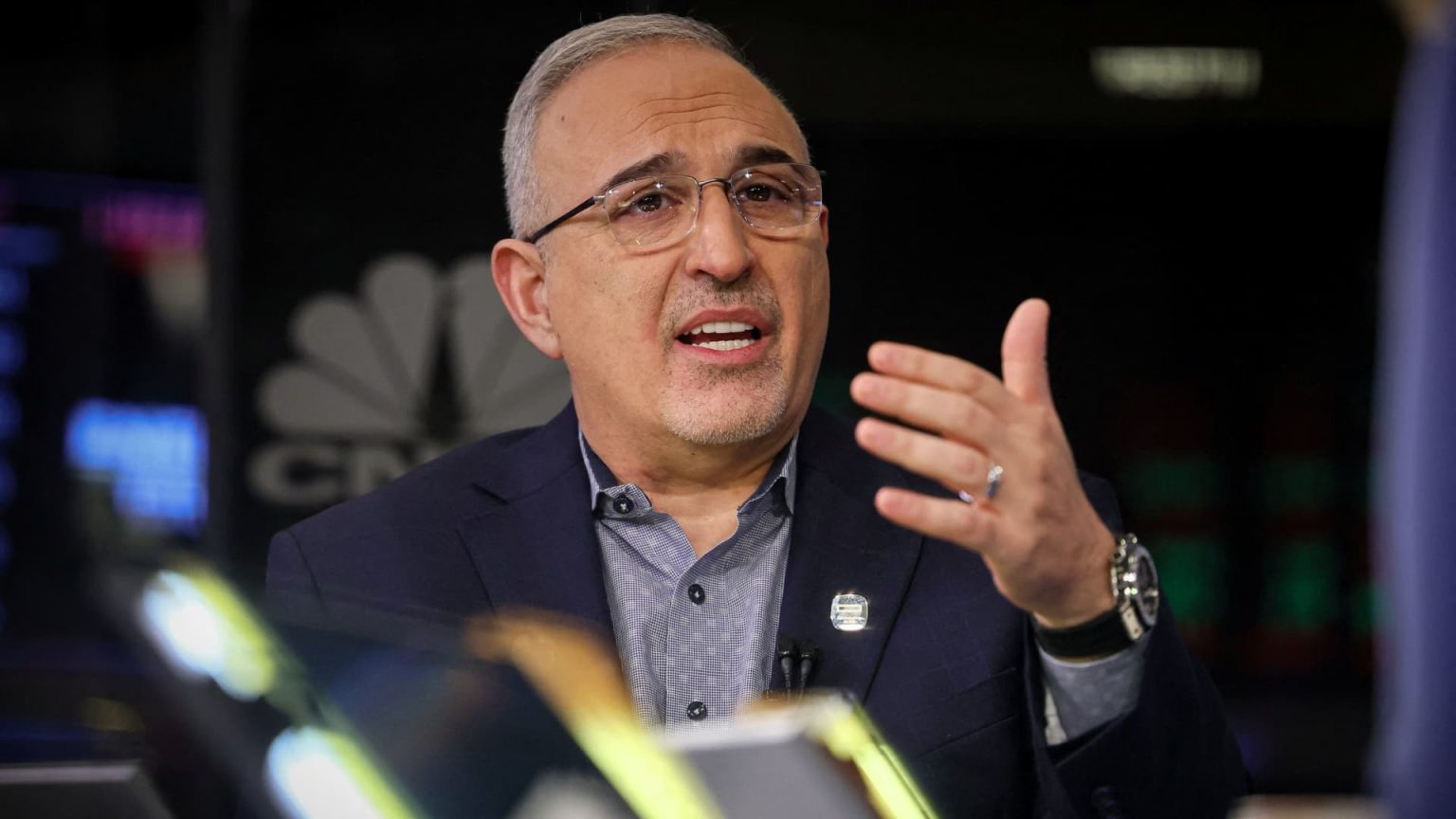Hewlett Packard Enterprise (HPE) faced a challenging financial quarter as the company’s shares plummeted 19% during extended trading in response to disappointing quarterly and full-year guidance. Despite posting a revenue growth of 16% year-on-year for the fiscal first quarter, significant challenges loomed due to higher-than-normal inventory of artificial intelligence servers and a substantial cost-cutting initiative that includes layoffs. CEO Antonio Neri acknowledged execution issues while navigating a competitive market with serious pricing pressures.
| Article Subheadings |
|---|
| 1) HPE’s Quarterly Performance Overview |
| 2) Factors Contributing to Revenue Fluctuations |
| 3) Cost-Cutting Measures and Impact on Workforce |
| 4) Legal Challenges and Acquisition Outlook |
| 5) Future Projections and Market Expectations |
HPE’s Quarterly Performance Overview
In the fiscal first quarter, ending January 31, HPE reported an adjusted earnings per share (EPS) of 49 cents, meeting expectations, while its revenue touched $7.85 billion, surpassing the anticipated $7.82 billion. The year-on-year revenue growth of 16% equated to a profit of $598 million or 44 cents per share, an improvement from the previous year when profit stood at $387 million or 29 cents per share. This financial performance, while positive on a historical scale, fell short of analysts’ forecasts for future earnings and revenues, leading to a pronounced drop in share value during extended trading sessions.
Factors Contributing to Revenue Fluctuations
Despite the positive growth in revenue, multiple factors hindered HPE’s overall market performance. During a conference call with analysts, CEO Antonio Neri identified the company’s high inventory levels of artificial intelligence servers, attributing this to a strategic shift toward next-generation Blackwell graphics processing units from Nvidia. This shift inevitably affected operational efficiency and profitability. Additionally, competition forced HPE to implement extensive discounting in the market while attempting to sell their traditional servers, exacerbating challenges in achieving desired revenue targets. Finance chief Marie Myers remarked that pricing adjustments may adversely affect the company’s top-line growth in the near term.
Cost-Cutting Measures and Impact on Workforce
In response to the challenges, HPE plans to initiate a cost-cutting program involving layoffs over the next 18 months, targeting gross savings of $350 million by the 2027 fiscal year. HPE anticipates that around 2,500 employees, equating to about 5% of its workforce, will be affected by these layoffs. The workforce, which counted 61,000 employees at the end of October, will undoubtedly feel the impacts of this reorganization as the company seeks to navigate tightening margins and market pressures. Neri emphasized the need for better execution to manage the implications of these adjustments while addressing longer-term operational sustainability.
Legal Challenges and Acquisition Outlook
As part of its strategic initiatives, HPE also announced plans to acquire Juniper Networks for $14 billion. However, this acquisition faces significant legal hurdles, as the U.S. Justice Department has filed to block the acquisition in federal court. A trial regarding this matter is expected to commence in July, potentially delaying the closure of the deal, which was initially anticipated for early 2025. Recent projections suggest completion by October 2025, although this timeline remains contingent on the court’s decision. This uncertainty adds another layer of complexity to HPE’s future, as the company strives to solidify its position in the ever-evolving technology landscape.
Future Projections and Market Expectations
Looking ahead, HPE has set a cautious tone for the future with guidance for the fiscal second quarter that falls short of market expectations. The company anticipates adjusted earnings per share between 28 cents and 34 cents with projected revenues ranging from $7.2 billion to $7.6 billion. Analysts had previously forecasted a much higher EPS of 50 cents per share based on anticipated revenue of $7.93 billion. For the fiscal year 2025, HPE predicts adjusted EPS in the range of $1.70 to $1.90—again, below the consensus prediction of $2.13. These lowered expectations could further impact investor sentiment as HPE works to stabilize amid shifting market dynamics.
| No. | Key Points |
|---|---|
| 1 | Hewlett Packard Enterprise shares dropped 19% after announcing disappointing quarterly and full-year guidance. |
| 2 | The company reported a profit of $598 million, marking a 44 cents per share increase. |
| 3 | HPE plans to initiate layoffs affecting around 2,500 employees to save $350 million. |
| 4 | Legal proceedings have been initiated to block HPE’s acquisition of Juniper Networks. |
| 5 | Future revenue projections are below market expectations, signaling potential challenges ahead. |
Summary
Hewlett Packard Enterprise is currently navigating a tumultuous financial landscape characterized by lower-than-expected earnings guidance and significant restructuring efforts. As the company grapples with inventory issues and competitive pricing pressures, stakeholders will closely monitor HPE’s strategic decisions, including workforce adjustments and legal challenges surrounding its acquisition ambitions. The company’s ability to recover and adapt will be crucial in maintaining investor confidence and ensuring sustainable growth in the coming years.
Frequently Asked Questions
Question: What factors led to HPE’s share price drop?
The drop was primarily due to the release of quarterly earnings that fell short of analyst expectations, along with a lowered forecast for future performance, prompting investor concern.
Question: How is HPE planning to reduce costs?
HPE plans to implement layoffs affecting about 2,500 employees over the next 18 months, aiming for gross savings of $350 million by the 2027 fiscal year as part of a broader cost-cutting initiative.
Question: What is the status of HPE’s acquisition of Juniper Networks?
HPE’s acquisition of Juniper Networks is facing legal challenges from the U.S. Justice Department, which has filed to block the transaction. A trial is expected to begin in July, aiming to resolve the acquisition’s feasibility.


